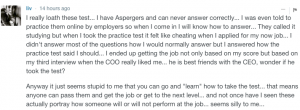Back in 2013, we said SAP will be hiring “autistic software testers, programmers, and data-quality-assurance specialists” in North America and Europe. The employees — including one who’d bounced around for years, underemployed on part-time gigs before landing at SAP — started joining in 2014, so it has been a couple of years now that the program’s been going on in the U.S.
How’s that working out?
 Apparently quite well. Jose Velasco is the U.S. lead on the program, and the co-leader globally of SAP’s Autism at Work. He says that autistic employees in general, at most companies, often don’t last a year (not to mention that the job-application process itself can frustrate applicants, as noted by one in a comment on an ERE post).
Apparently quite well. Jose Velasco is the U.S. lead on the program, and the co-leader globally of SAP’s Autism at Work. He says that autistic employees in general, at most companies, often don’t last a year (not to mention that the job-application process itself can frustrate applicants, as noted by one in a comment on an ERE post).
That’s not the case at SAP. The software giant has brought on 66 people globally, and Velasco tells me only two have left.
Some have met expectations, he says, and others have succeeded them. One hire recently published a successful product guide that was put online for SAP and generated a lot of traffic. Another was on a winning SAP hackathon team.
Velasco says that a lot of effort has gone into training and onboarding the autistic hires; companies that can’t or don’t take those extra measures may be the ones finding themselves with the high turnover mentioned above.
Most of the problems that’ve come up at SAP are small ones, often related to communication. “Pretty uneventful,” Velasco says.
Henry Albrecht, CEO of wellness/engagement company Limeade, isn’t surprised to hear SAP’s hires are working out better than other firms’. A company with its size and resources, he says, is likely “much better built for this” than many firms.
Albrecht notes that there are a lot of easily forgotten ancillary benefits of bringing autistic employees into the workforce. For one, getting a job, for some autistic job candidates, can be a huge plus for their general well being and happiness, something that goes well beyond just getting a paycheck, and can make them highly engaged in their work. Also, it can, depending on the situation (like in more significant cases), free up a lot of time for their parents to work, if they were spending their time assisting the autistic person.
Velasco once said on his blog that he hopes “to have 1 percent of its workforce represented by employees in the autism spectrum by the year 2020.”
That’s not out of the question. But, “it’s a moving target,” he says. It may happen in 2019, and may happen in 2022. Either way, it won’t signal the end of the program, which he views as “sustainable.”
The new employes have been hired in India, Germany, Ireland, Canada, and the U.S. The Czech Republic and Brazil are next. Specialisterne typically helps kick it off as SAP expands autistic-employee hiring in new countries, and then local organizations get involved. By the end of this year, SAP will have hired 90 to 100 people on the autism spectrum, with about a quarter of them in the U.S.
image from Shutterstock
